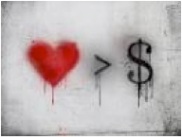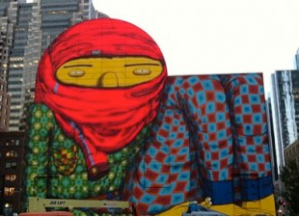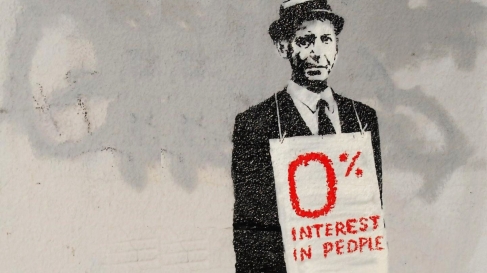Revolutions can only begin if the people want change. It is our duty as members of a democratic society to express our knowledge and distrust in the systems that governs us. Uprisings all over the world show different groups of people fighting back against these systems. Through graffiti and street art specifically, people are able to take a creative approach at inspiring change in those around them and are able to simply and creatively bring sense to complicated situations. These artists are inspired to alter the visual landscapes around them, landscapes that suffocate people with billboards and advertisements. Parisians, Nicaraguans, and South Africans alike used this form of expression to break a discourse of hegemony that existed and ruled them.
In the late 1960’s in Paris, a group of students known as the Enragés took to the walls of the streets and universities in protest. “Commodities are the opium of people” were such phrases booming off these walls, coinciding with the student and worker occupation strikes of the time. Parisians used the arts to let their imaginations explode in reaction to the repression they felt in French society.

A young Nicaraguan women standing next to an example of a Sandino graffiti piece.
Nicaraguans, during the July 1979 revolution over Anastasia Somoza, used pinta to refer to the extensive use of graffitied politically driven slogans. A group of people known as the FSLN would create their art overnight in order to keep secret from police forces. During this era in Nicaragua, there were little to no media outlets and the two channels they had access to were controlled by the US government, so graffiti was recognized as the ‘news media bursting from the walls’. A symbol of the Nicaraguan revolution was Augusto Sandino, whose cowboy-like image was scattered through much of the graffiti in this era. Sandino was a Nicaraguan leader of the 20’s and 30’s who resisted US impact and persuasion in Nicaragua. This art form gave Nicaraguan’s a political voice that ultimately led to Anastasia Somoza’s decline.

An example of anti-apartheid street art with moving messages in the late 1970’s in South Africa.
Likewise in South Africa, this art form assisted in social change by giving the people a democratic voice during an apartheid era of extreme racial segregation. During the 1970’s, the South African youth or ‘cultural workers’ were able to come together through music, theatre, graffiti, and creative art to express their anti-apartheid sentiments. Youth used posters and t-shirts to cover the streets with messages of peace and requests for change. A South African artist, Sue Williamson wrote “as press censorship increases, the writing on the wall has become required reading.” Government control during this era pushed the people to the streets as an outlet to insist change.
Street art played a role in the social movements in France, Nicaragua, and South Africa. Most of the time led by educated youth who saw the flaws of the society they were a part of a resistance movement against the oppression by the governments of their time. These movements were empowering, creative, artistic, and democratically powerful.
–Erika Hoekstra
 college education. At the University of Massachusetts Amherst students are working on a student debt fence project in which students can submit ideas or post signage to a metal link fence with the purpose of raising awareness of this issue. Students are finding inspiration from famous street artists, such as Banksy, whose work is filled with meaningful social commentary.
college education. At the University of Massachusetts Amherst students are working on a student debt fence project in which students can submit ideas or post signage to a metal link fence with the purpose of raising awareness of this issue. Students are finding inspiration from famous street artists, such as Banksy, whose work is filled with meaningful social commentary.







